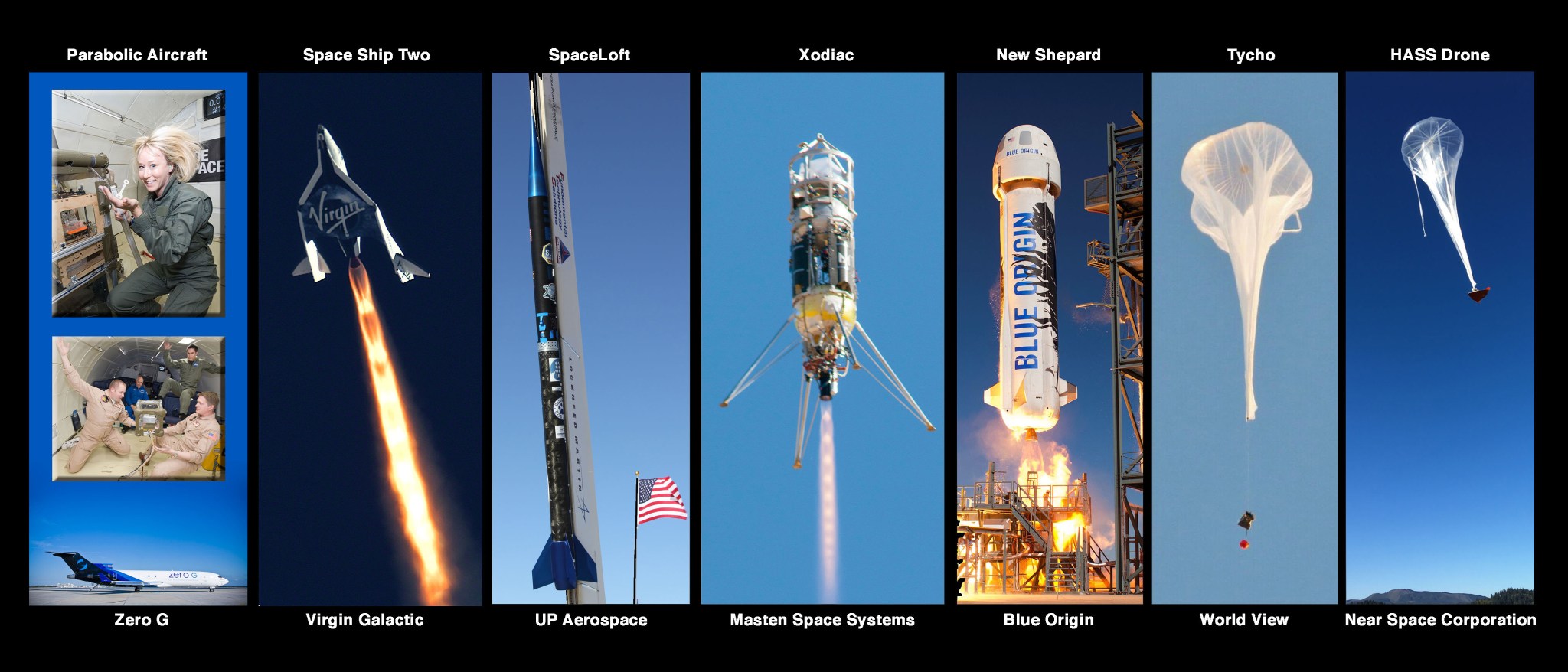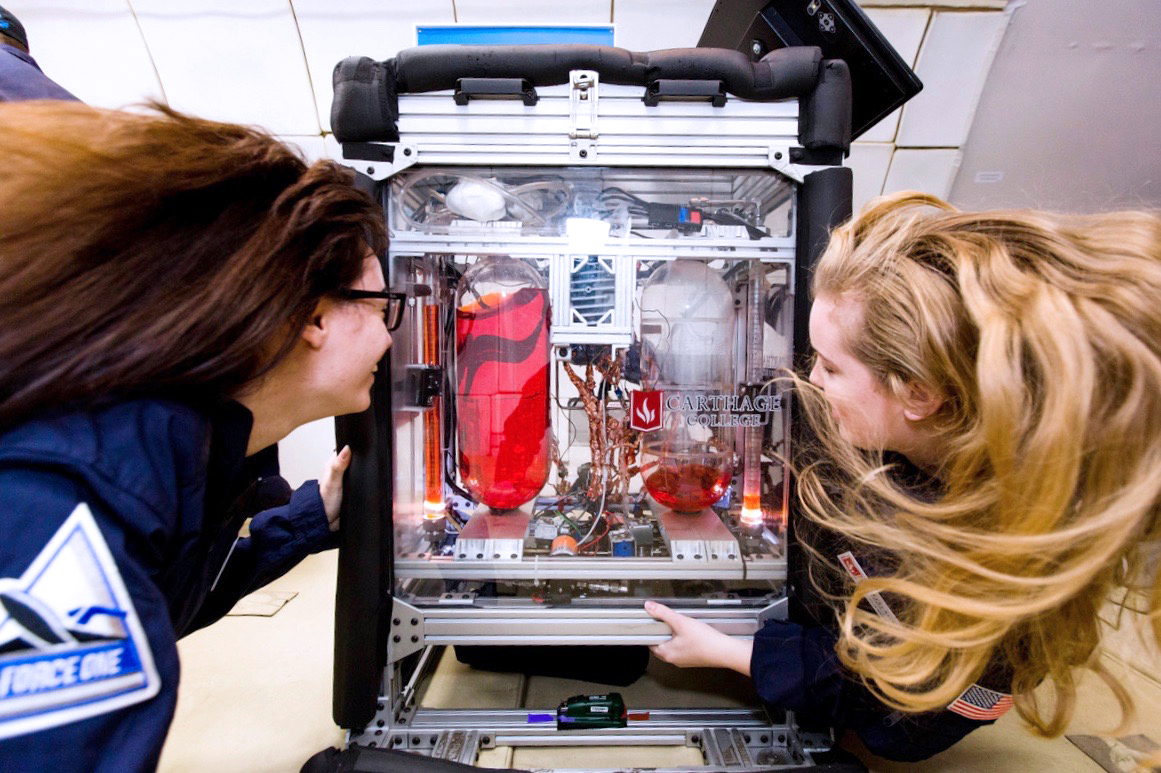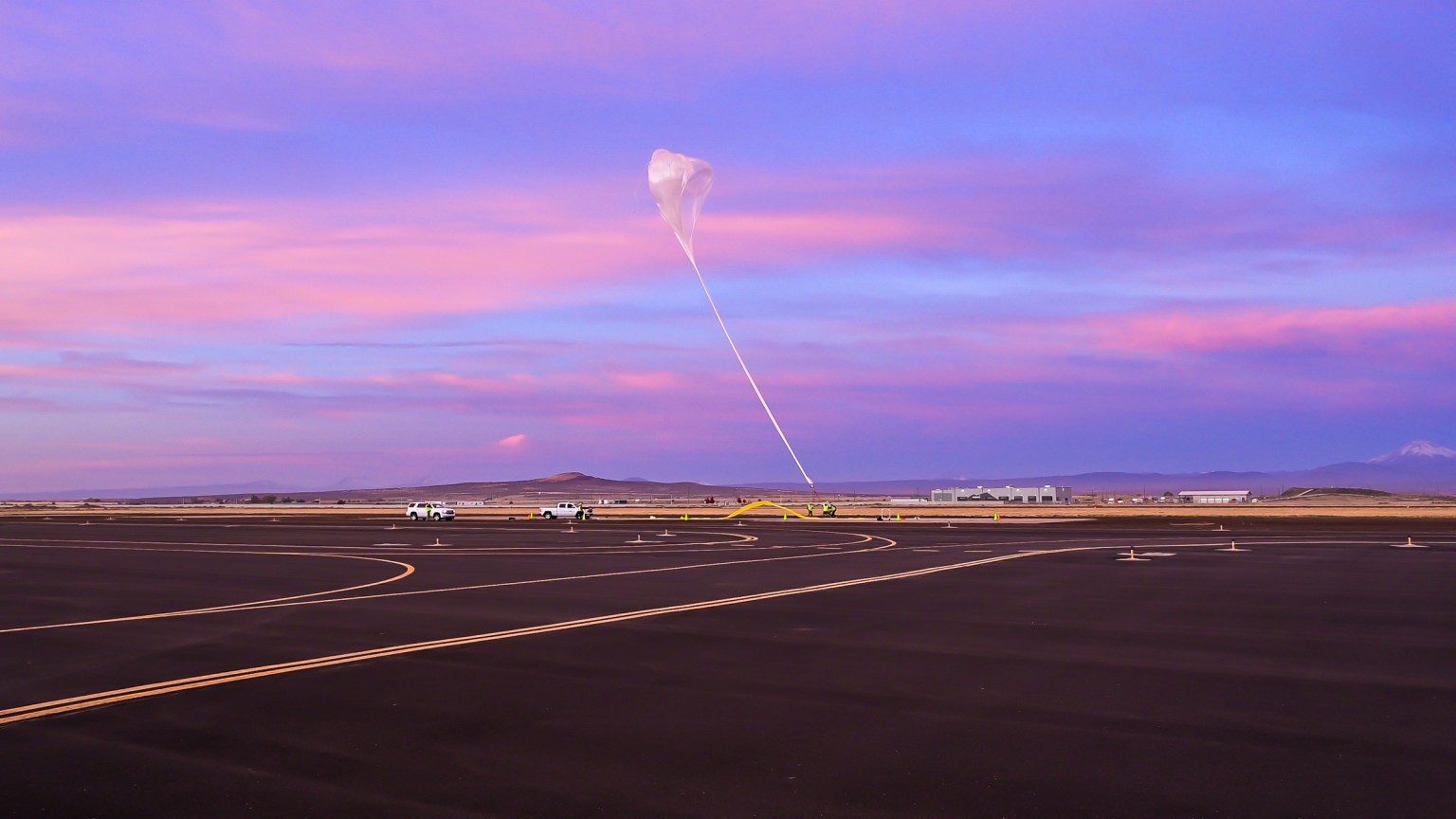NASA has selected nine space technologies to test on low-gravity-simulating aircraft, high-altitude balloons or suborbital rockets. The opportunity to fly on these vehicles helps advance technologies closer to practical use by taking them from a laboratory environment to a real-world environment. The selections were made by NASA’s Flight Opportunities program, which conducts a competition approximately twice per year for funding to fly payloads using flight providers selected by the proposers. These space technologies are being tested using relatively low-cost flights that simulate spaceflight or just reach the “edge” of space.
“The Flight Opportunities program is a great resource for technology developers to be able to test their ideas in the space environment,” said Stephan Ord, the program technology manager for NASA’s Flight Opportunities program. “Suborbital flight costs are relatively cheap compared to orbital costs, so often researchers will be able to discover potential problems with their hardware prior to investing in a full orbital flight.”
Two topics were included in this call for research. Under the first topic, which requested demonstration of space technology payloads, NASA selected seven proposals:
Gravity Effects on Flow Boiling Heat Transfer Using Temperature Sensitive Paints in Preparation for an ISS Flight Experiment, Jungho Kim, principal investigator, University of Maryland, College Park. This payload will collect data on boiling flows using parabolic flights. The data will help develop more accurate models for boiling flow in microgravity, which will be used to help design the next generation of heat exchangers for space use. Flight provider: Zero-G Corp.
Demonstration of Optimal Chilldown Methods for Cryogenic Propellant Tanks in Reduced Gravity, Jacob Chung, principal investigator, University of Florida, Gainesville. Tank chilldown is a necessary step when performing tank-to-tank cryogenic propellant transfer, needed for fuel depots or deep-space human missions. This payload has the potential of reducing the amount of fuel used for chilling the tanks. Flight provider: Zero-G Corp.
EMPANADA: Ejecta-Minimizing Protocols for Applications Needing Anchoring or Digging on Asteroids, Karen Daniels, principal investigator, North Carolina State University, Raleigh. The EMPANADA payload explores new ways of penetrating soil in microgravity by using flexible probes inspired by plant roots driven at very slow speed. This new technology could be used in asteroid mining or anchoring to a low-gravity object. Flight provider: Zero-G Corp.
Draper Multi-Environment Navigator High Altitude Balloon Campaign. Brett Streetman, principal investigator, Charles Stark Draper Laboratory Inc., Cambridge, Massachusetts.
This is a set of sensors packaged with a computer to process data and provide navigation data for a vehicle. This self-contained unit provides autonomous navigation capability that could be used for planetary landing, relative navigation and moving about the surface of a planetary body. Flight provider: World View Enterprises
Cryogenic Gauging Technology Geometry Development. Steven Collicott, principal investigator, Purdue University, West Lafayette, Indiana. The radio frequency mass gauging technique is one of the main candidate technologies to provide a rapid, repeatable and accurate gauging method for cryogenic propellant tanks in weightlessness. This payload experiment will specifically help determine the impact of probe geometry on the performance of the system. Flight provider: Blue Origin
Microgravity Propellant Gauging Using Modal Analysis: Phase III. Kevin Crosby, principal investigator, Carthage College, Kenosha, Wisconsin. Measuring the amount of propellant left in a tank in low-gravity can be complex and often requires firing rocket engines to move the fuel to the end of the tank, which costs extra fuel. This payload will optimize a simple low-cost gauging method using vibration response to estimate the tank fill level. Flight providers: Zero-G Corp and Blue Origin
LISA-T Microgravity Deployment Demonstration. Greg Laue, principal investigator, ManTech International Corporation, Huntsville, Alabama. This experiment is a thin-film solar array and antenna that is deployed from an extremely compact volume and is very lightweight. It will greatly increase the ability to generate power in small satellites such as CubeSats, advancing their capabilities. Flight provider: Zero-G Corp.
Under the second topic, demonstration of vehicle capability enhancements and onboard research facilities for payload accommodation, NASA selected two proposals:
JANUS 3.0: Enabling Game Changing External Environment Payload Accommodation on Suborbital Reusable Launch Vehicles. H. Todd Smith, principal investigator, Johns Hopkins University, Laurel, Maryland. This is a platform mounted on the Blue Origin New Shepard rocket which holds small payloads and exposes them to the space environment. It will allow payloads to perform testing and sampling in the atmosphere at an altitude of 49.6-62 miles (80-100 kilometers), a capability that is not currently available. Flight provider: Blue Origin
Stratospheric and Suborbital Flight Experiments and Equipment. Elizabeth Kennick, principal investigator, Teachers In Space, Inc., New York. The proposer has developed a standardized 3-D printed housing fitted with a customizable processor, data storage, sensors and batteries for flying payloads. This accommodation could provide a future platform for teachers and students to test their experiments in space. Flight provider: Blue Origin
Awards will be made for payload integration and flight costs, as well as limited payload development costs. These investments take technologies from the laboratory to a relevant flight environment, facilitate technology maturation, validate feasibility and reduce technical risks and enable infusion of key space technologies into multiple future space missions.
The Flight Opportunities program is funded by NASA’s Space Technology Mission Directorate in Washington and managed at NASA’s Armstrong Flight Research Center in Edwards, California. NASA’s Ames Research Center in California’s Silicon Valley, manages the solicitation and selection of technologies to be tested and demonstrated on commercial flight vehicles.
For more information on NASA’s Flight Opportunities program, visit: https://www.nasa.gov/flightopportunities
Media contacts:
Kimberly Minafra, 650-604-2457
Ames Research Center, Silicon Valley, California
Leslie Williams, 661-276-3893
Armstrong Flight Research Center, Edwards, California































